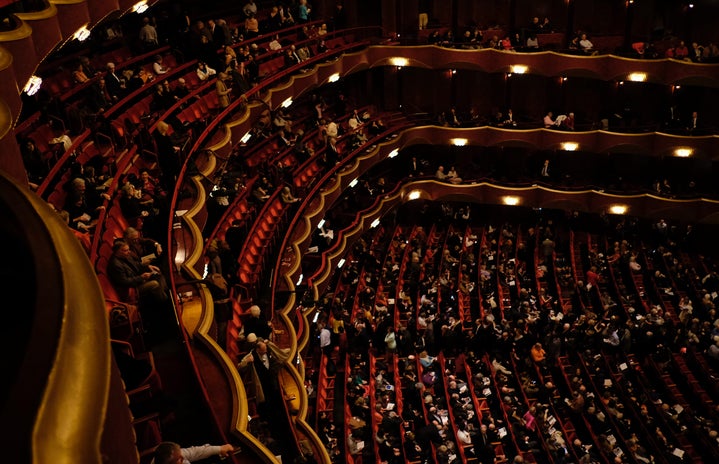A couple weeks of ago, I wrote an article about the best Canadian TV shows, including two of my favourite series, Orphan Black and Schitt’s Creek. While writing the article, I noticed that one of the components that makes these shows so great is their incorporation of queer characters and storylines. The more I thought about it, the more I realized that queerness has always been an integral part of of iconic Canadian television.
One of my first introductions to Canadian TV was through The Rick Mercer Report (2004 – Present). My sixth grade teacher had all of his students design minute-long rants in the style of Rick Mercer, and I proceeded to binge all of his sketches on the CBC website. I feel like I always knew that Rick Mercer was gay, but I particularly remember his “Rick Rant” about teenage suicide. I was in grade eight when a gay teenager named Jamie Hubley was bullied to the point of suicide at a local high school, and about a week later Rick Mercer talked about teenage suicide and the bullying of gay teens on his show. The Rick Mercer Report is just one example of a Canadian TV show that highlights queer issues in the country.
Photo via CBC
The early 2000s were full of queer Canadian and Canadian-American series, including Queer as Folk (2000-2005), the The L Word (2004 – 2009), and Degrassi: Next Generation (2001-2015). According to Queer as Folk’s Wikipedia page, this show was “the first hour-long drama on American television to portray the lives of homosexual men and women,” and though it is set in Pittsburgh, Pennsylvania, Queer as Folk was filmed in Toronto. This show hired a lot of Canadian directors, including York University professor John Greyson, and the dance club scenes were shot at Fly 2.0, a club that still stands in the Church-Wellesley Village.
Alternatively, The L Word was shot in the other Hollywood North – Vancouver. Although most of the cast is American, Mia Kirshner, who plays Jenny Schecter, is from Toronto. This show is a staple of lesbian culture, and was created by the sister company of Temple Street Productions (who produced Queer as Folk and Orphan Black). Degrassi, one of the most iconic pieces of Canadian TV, has also been a pioneer in telling queer stories, and is the first show I’ve mentioned that actually takes place in Canada (Toronto, specifically). Now the newest Degrassi installment, Degrassi: Next Class (2016 – Present), is continuing to tell queer stories on Family Channel and Netflix.
Photo via Degrassi Wikia
Canada also tackles queer issues in new media forms of television. For example, Carmilla (2014-2016) is a Canadian web series about a freshman searching for her missing roommate, and falling in love with a vampire in the process. As of 2017, the series had generated over 70 million views on Youtube, and even won the 2015 AfterEllen Visibility Awards for Best Bi/Lesbian Character, Best Lesbian Relationship and Best Web Series. Another example is Gaycation (2016 – Present), a docuseries on Viceland that follows Ellen Page and Ian Daniel as they travel around the world to learn about the queer experience in different cultures. Gaycation is not technically a Canadian production, but since Vice started out as a Canadian company based in Montreal and Ellen Page is a gay Canadian icon, I’m going to let Canada take the credit for this one.
Although I haven’t seen these shows yet, I know that Canada is keeping the queerness in supernatural drama through Lost Girl (2010-2016) and Wynonna Earp (2016 – Present). The main character in Lost Girl is Bo, a bisexual succubus trying to save the world while searching for her origins. Just like Carmilla, Lost Girl has also won a lot of AfterEllen Visibility Awards. This show was produced by the Canadian company Showcase, and, like many of the other series in this article, was shot in Toronto. Wynonna Earp (2016 – Present) is another supernatural drama whose season 3 is supposedly airing around Summer 2018. Created by Ryerson alum and Lost Girl showrunner Emily Andras, the show is shot and takes place in Alberta. One of the most celebrated relationships in the show is that between the Sheriff’s Deputy Nicole Haught and Wynonna’s younger sister, Waverly. And though American television continues to utilize the “Bury Your Gays” trope and Dead Lesbian Syndrome, Andras has been particularly vocal about not adhering to these clichés.
Photo via IMDb
As Canadian TV is getting better, so is its representation of queer characters. As I said at the beginning of this article, Orphan Black (2013-2017) and Schitt’s Creek (2015-Present) are two of my favorite shows with my favorite representations of queer characters, that just happen to be Canadian. The thing that I love about these series is that their queer characters are three-dimensional, and most of their storylines are not determined by their sexuality, or, if they are, they are handled in an authentic way. Unlike most mainstream media, the queer romances in these shows are not stereotypical or cartoonish, but complex and meaningful. I also love how these shows highlight a variety queer experiences, instead of rehashing old tropes we’ve seen time after time. Orphan Black explores everything from Cosima’s unapologetic lesbianism to Delphine discovering her bisexuality, while, on Schitt’s Creek, we see David become one of the first characters on television to identify as pansexual and Patrick coming to terms with his sexuality for the first time as an adult.
As you can seen, queerness has always been a part of Canadian television history, and we still continue to make strides through our series. When comparing the amount of representation Canada is able to provide in its few shows, to the rather lacking number in the hordes of American series, I am left to wonder why queerness always been a tangible component to Canadian TV? Perhaps because a fewer number of Canadian shows are greenlit, the standards for characterization are higher, or maybe because “otherness” is a theme often explored in Canadian media, as Canada prides itself on being a cultural “mosaic” rather than a melting pot. Whatever the reason, the world of Canadian television has a queer element that cannot, and should not be, overlooked. And hopefully we will get to see even more diverse queer couples on Canadian TV in the future.


